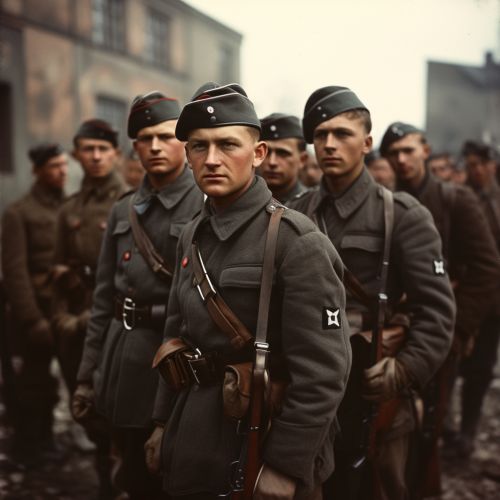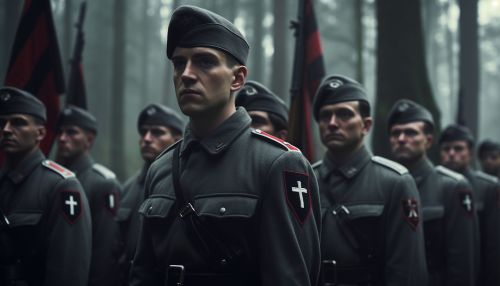Waffen-SS
Formation and Early Years
The Waffen-SS was the combat branch of the SS, a paramilitary organization under Adolf Hitler and the National Socialist German Workers' Party. Formed in 1933, the Waffen-SS saw extensive service during World War II, growing from three regiments to over 38 divisions.


The Waffen-SS was initially created as a small, elite military unit of the SS with the mission of protecting the Nazi leadership. However, it expanded rapidly under the leadership of Heinrich Himmler, who envisioned it as a fourth branch of the German military, independent of the Wehrmacht, the traditional German Army.
Expansion and World War II
During World War II, the Waffen-SS grew significantly, both in terms of size and scope of operations. It participated in numerous campaigns, including the Invasion of Poland, the Battle of France, and the Operation Barbarossa, the invasion of the Soviet Union.
The Waffen-SS divisions were often deployed where the fighting was heaviest, earning a reputation as an elite force. However, they were also implicated in numerous war crimes and atrocities, including the Massacre at Oradour-sur-Glane and the Warsaw Uprising.
Structure and Organization
The Waffen-SS was organized into a number of divisions, each with its own command structure and operational focus. These included Panzer (armored), Panzergrenadier (mechanized infantry), and Mountain (alpine) divisions.
The Waffen-SS also incorporated a number of foreign volunteers and conscripts, organized into national legions. These included the 13th Waffen Mountain Division of the SS Handschar, composed of Bosnian Muslims, and the 5th SS Panzer Division Wiking, composed of volunteers from Nordic countries.
War Crimes and Atrocities
The Waffen-SS was involved in numerous war crimes and atrocities during World War II. These ranged from the execution of prisoners of war to the massacre of civilians, and were often carried out in conjunction with the Einsatzgruppen, the SS's mobile killing units.
After the war, many members of the Waffen-SS were tried and convicted for their roles in these crimes. However, others evaded justice, often with the help of networks of former SS members known as "ratlines".
Post-War Legacy
The legacy of the Waffen-SS is a subject of ongoing debate. Some view it as a purely criminal organization, due to its involvement in war crimes and the Holocaust. Others, particularly in countries where the Waffen-SS incorporated local volunteers, view it as a military force that fought against the Soviet Union.
In post-war Germany, the Waffen-SS was classified as a criminal organization by the Nuremberg Trials. However, its veterans were allowed to form associations, and some received pensions under the German war veterans' law.
